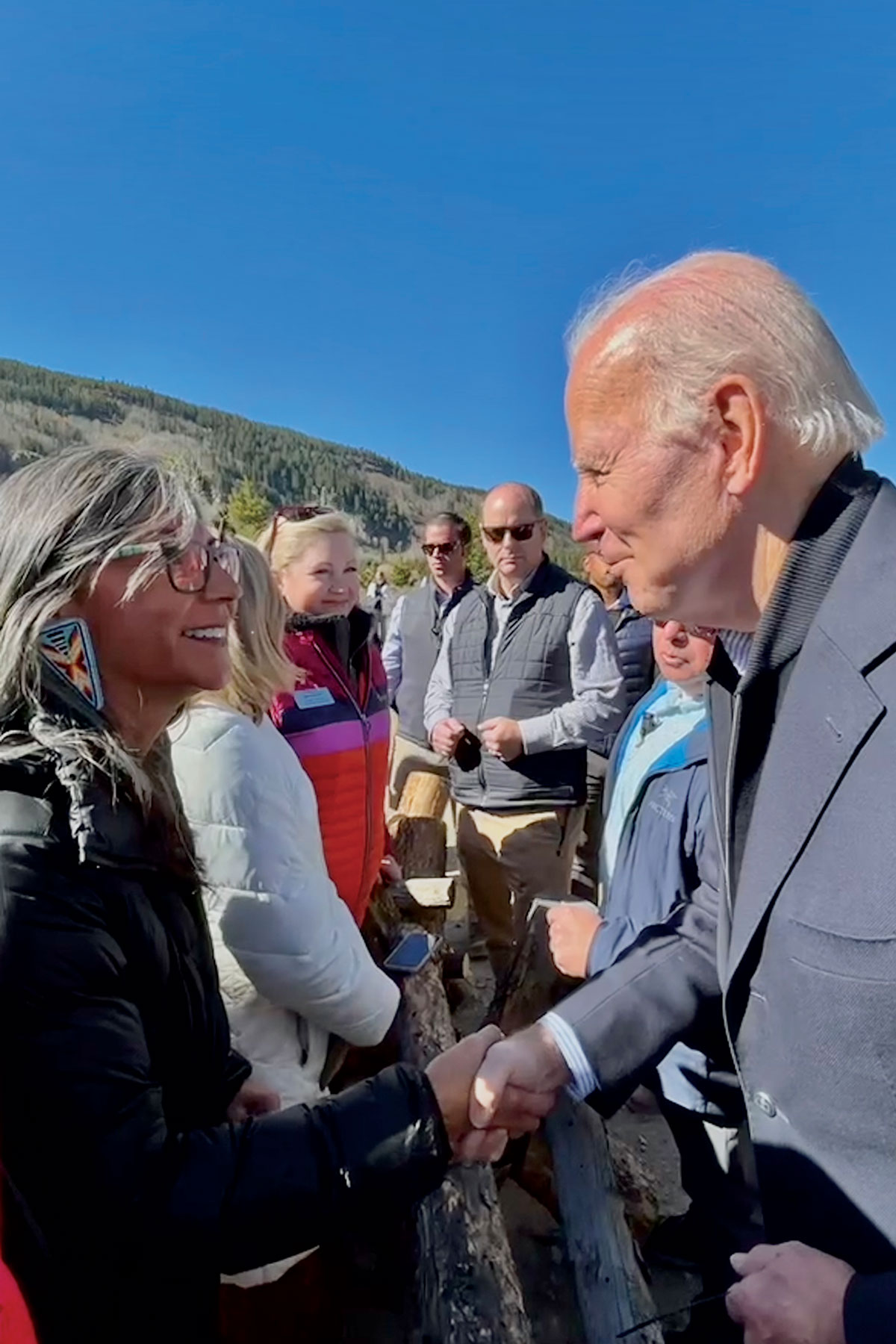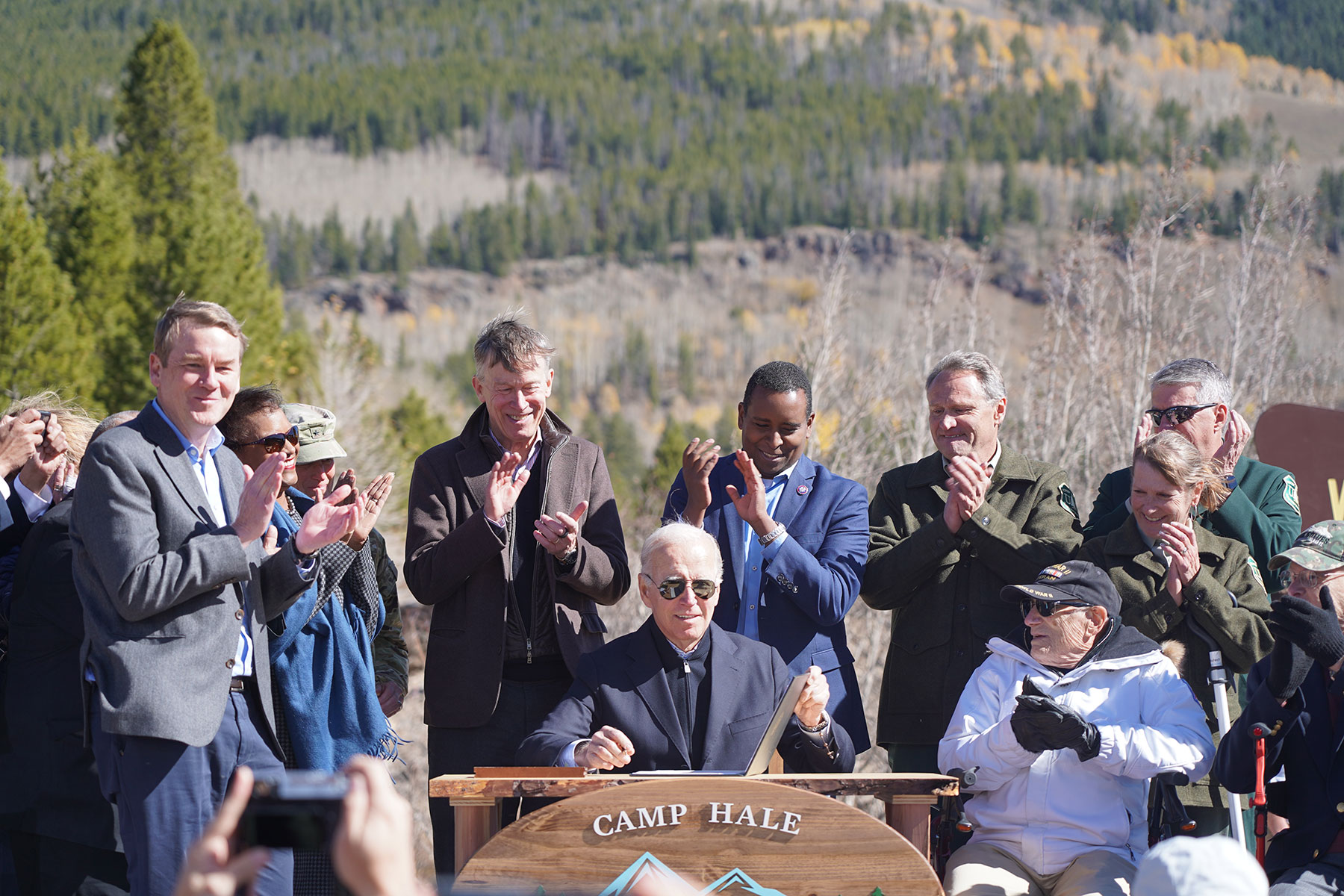President Joe Biden signed a proclamation designating Camp Hale – Continental Divide as the administration’s first national monument, Wednesday, Oct. 12. During World War II Camp Hale served as a training ground for the 10th Mountain Division, but also holds the significance as a homeland of the Ute tribes, wildlife, geological features, and recreational opportunities. The monument will commemorate Colorado’s and America’s military, Tribal and natural history. Members of the Southern Ute Tribal Council were in attendance as President Joe Biden signed the historic proclamation.
According to a press release on Monday, Oct. 17 from Chairman Melvin J. Baker and Tribal Council Affairs — members of the Southern Ute Tribal Council and members of the Ute Mountain Ute Tribal Council had the honor of being present at Camp Hale when the proclamation was signed. President Biden speaks to the importance of the Camp Hale area during the dedication ceremony, “The Camp Hale and Tenmile Range area is also rich in ancient human history. The area bears the marks of centuries of habitation by Indigenous peoples who have called the region home since time immemorial and who referred to this area of the Rocky Mountains as Káava’avichi – meaning ‘mountains laying down.’ Forced from much of their homelands when precious minerals were discovered, their history serves as a stark reminder that the United States’ commitment to its highest ideals of democracy, liberty, and equality has too often been imperfect, particularly for Tribal Nations and Indigenous peoples.”
The acknowledgement of the Ute tribes and Indigenous peoples in President Biden’s proclamation is credited to the outreach and consultation performed by Senator Michael Bennet of Colorado, through his direction the Colorado Ute tribes were consulted when discussion of the designation of Camp Hale as a National Monument began. According to the press release, “the Biden Administration ensured that the Southern Ute Indian Tribe, the Ute Mountain Ute Tribe, and the Ute Indian Tribe of Utah each had the opportunity to express issues of cultural concern.”
The Camp Hale – Continental Divide National Monument will preserve and protect the mountains and valleys that once served as a highly important training ground for the famed 10th Mountain Division, the Army’s first and only mountain infantry division, that helped liberate Europe in World War II, but long before its establishment as a military camp, the area was home to the Núuchiu or Ute people. “Ute peoples traveled to the Pando Valley, where Camp Hale is currently situated, when winter snows melted as part of an annual circuit called the Míyatukhwatni – meaning ‘moving locations as the seasons change’ to hunt game and to gather plants and minerals for sustenance, medicine, and spiritual use,” as stated in the Tribe’s press release. “It remained home to the Ute people until they were forcibly removed from the area following the Treaty of 1868.”
Despite relocation, the Ute people still hold on to their strong cultural ties to the Camp Hale and Tenmile Range area and maintain the connection established centuries ago. The Southern Ute Indian Tribe gives its thanks to President Joe Biden, Senator Michael Bennet, Senator John Hickenlooper, Governor Jared Polis, and U.S. Representative Joe Neguse for their efforts in establishing Camp Hale – Continental Divide as a National Monument. Within the press release from Chairman Melvin J. Baker and Tribal Council Affairs, Chairman Baker states, “By preserving these areas of cultural importance to the Ute people, the President is reflecting the significance of Native people and tribal nations to the history and progress of this country.”
“But this is only a first step,” Baker said. “In the days ahead, the Southern Ute Indian Tribe looks forward to continued consultation, along with our sister Tribes, with this administration and federal agencies on the protection, preservation, and eventual co-management of these important cultural resources.”




